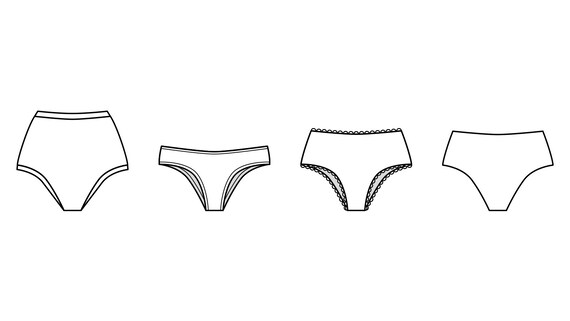
1. Understanding Swimwear Patterns
Basic Components
Front and Back Panels: The main body pieces of the swimwear.
Lining: Interior pieces that provide extra support and prevent transparency.
Straps and Ties: Additional pieces for support and fastening.
Types of Swimwear Patterns
One-Piece: Typically includes a front piece, back piece, crotch lining, and optional bust support.
Bikini: Separate patterns for the bikini top (front, back, straps) and bikini bottom (front, back, crotch lining).
Tankini: Similar to a one-piece for the top, combined with bikini bottom patterns.
2. Preparing the Pattern
Measurements
Accurate Sizing: Take precise body measurements, including bust, waist, hip, and torso length.
Ease and Stretch: Consider the fabric�s stretch properties and add appropriate ease for comfort.
Pattern Drafting
Block Patterns: Start with a basic block pattern for swimwear, which can be adjusted for different styles.
Customization: Modify the block pattern to include design elements such as cut-outs, ruching, or high-cut legs.
3. Pattern Cutting Techniques
Tools and Materials
Pattern Paper: Use durable paper for creating and modifying patterns.
Cutting Tools: Sharp scissors or rotary cutters ensure clean, precise cuts.
Measuring Tools: Rulers, tape measures, and French curves for accurate measurements and smooth curves.
Steps in Pattern Cutting
Trace the Pattern: Use the drafted pattern to trace onto the fabric, ensuring all pieces are aligned properly.
Marking: Mark important points, such as notches, grainlines, and seam allowances, on the fabric.
Cutting: Carefully cut the fabric along the traced lines, ensuring smooth edges and accurate shapes.
4. Adjusting for Fit
Prototyping
Mock-Up: Create a prototype using inexpensive fabric to test the fit and make necessary adjustments.
Fit Testing: Have a fit model try on the prototype to check for fit issues and comfort.
Alterations
Adjusting Seams: Modify seam lines and darts to improve fit.
Length Adjustments: Ensure the torso length and leg openings are suitable for comfort and style.
5. Fabric Considerations
Stretch and Recovery
Four-Way Stretch: Use fabrics with four-way stretch for maximum comfort and mobility.
Recovery: Ensure the fabric has good recovery to maintain shape after wear and washing.
Lining Materials
Supportive Lining: Use lining fabrics that provide support and opacity without adding bulk.
Breathability: Choose breathable, quick-drying linings for comfort.
6. Seam Allowances and Finishing
Seam Allowances
Standard Allowance: Typically 1/4 to 3/8 inch for swimwear to reduce bulk.
Elastic Allowance: Add extra allowance for areas where elastic will be sewn.
Finishing Techniques
Flatlock Seams: Create smooth, flat seams that lie close to the skin.
Overlocking: Secure raw edges with overlocking to prevent fraying.
7. Creating Different Styles
Customizing Patterns
Cut-Outs and Panels: Incorporate design elements like cut-outs, mesh panels, or color blocking.
Ruching and Draping: Add fabric manipulation techniques for visual interest and flattering fit.
Straps and Closures
Adjustable Straps: Include adjustable features for better fit and versatility.
Secure Closures: Use reliable closures like clasps, hooks, or ties for secure fastening.
8. Testing and Refinement
Final Prototypes
Wear Testing: Have users wear the final prototype during activities to test comfort, fit, and durability.
Feedback Loop: Gather feedback and make necessary refinements to the pattern.
Production Preparation
Grading: Adjust patterns for different sizes to cater to a wide range of customers.
Documentation: Create detailed pattern documentation for consistent production.
Conclusion
Pattern cutting for swimwear involves careful planning, precision, and attention to detail. By understanding the types of swimwear patterns, preparing and cutting patterns accurately, and making necessary adjustments for fit, designers can create swimwear that is not only stylish but also comfortable and functional. Proper pattern cutting ensures that the final product meets high standards of quality and performance, making it a vital step in the swimwear design process.